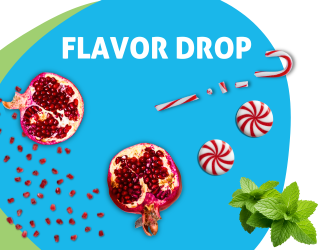 Consumers have become slightly obsessed with the “less is more” philosophy. Within the food and beverage industry, we see a demand for smaller portions—consumers are willing to pay the same or more for 7.5-ounce cans instead of 12-ounce cans of carbonated soft drinks (CSDs). Shorter ingredient statements also are viewed as superior, as products boast slogans like “just 5 ingredients”. Many brands are even listing their ingredients right on the front of the package. (Suja, Kind, Blueprint, Temple Turmeric, Pressery, and Juice Served Here are just a few brands that come to mind). In addition to fewer ingredients on the label, there are other ways that we’re seeing “less” manifested in food and beverages.
Consumers have become slightly obsessed with the “less is more” philosophy. Within the food and beverage industry, we see a demand for smaller portions—consumers are willing to pay the same or more for 7.5-ounce cans instead of 12-ounce cans of carbonated soft drinks (CSDs). Shorter ingredient statements also are viewed as superior, as products boast slogans like “just 5 ingredients”. Many brands are even listing their ingredients right on the front of the package. (Suja, Kind, Blueprint, Temple Turmeric, Pressery, and Juice Served Here are just a few brands that come to mind). In addition to fewer ingredients on the label, there are other ways that we’re seeing “less” manifested in food and beverages.
Sugar Reduction
The emphasis on sugar reduction exists for two main reasons: the first is the prevalence of ailments like heart disease and diabetes. These diseases have strong links to obesity, which is often caused by diets high in sugar. The bold step by FDA to change the Nutrition Facts panel also has brought sugar reduction to the limelight.
Health concerns and better educated consumers are propelling the demand for sugar reduction across food and beverage categories. In turn, food product developers are looking to new ingredient technologies that allow them to maintain taste and texture while maintaining as clean of an ingredient statement as possible. Sugar reduction will be one of the top marketing claims prominently feature on products in the coming year—whether it’s through increases in sugar reduction percentages, or total grams of sugar called out more frequently.
Less Sodium
High blood pressure, stroke and coronary heart disease are just a few of the ailments associated with a high-sodium diet. According to a recent Centers for Disease Control and Prevention (CDC) survey, more than 90 percent of Americans are eating much more than the 2,300 mg target set by the U.S. Department of Health and Human Services. Current dietary guidelines recommend 2,300 mg of sodium, and FDA acknowledges that the average sodium intake, 3,400 mg, is heavily impacted by the consumption of processed foods.
To make Americans healthier, the agency is currently asking for volunteers to reformulate with sodium reduction in mind. Since many food and beverage products take a year or two to make it to market, their goal is to make an impact in sodium reduction in the food and beverage industry at the end of 10 years. Because of this FDA initiative, which will bring more attention to sodium, I expect to see more consumers become impassioned about sodium reduction in the next three to five years.
Read the full article on Food Insider Journal.



